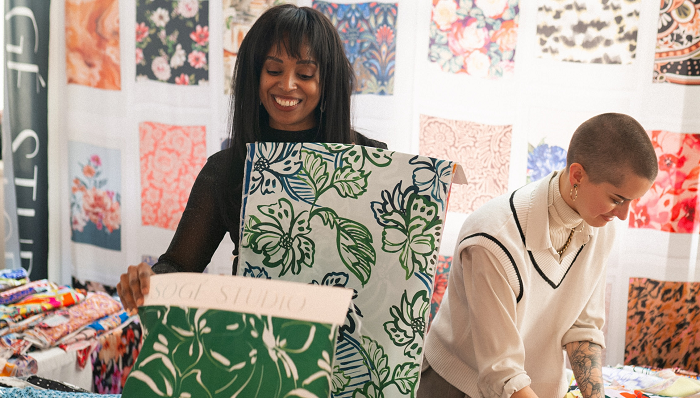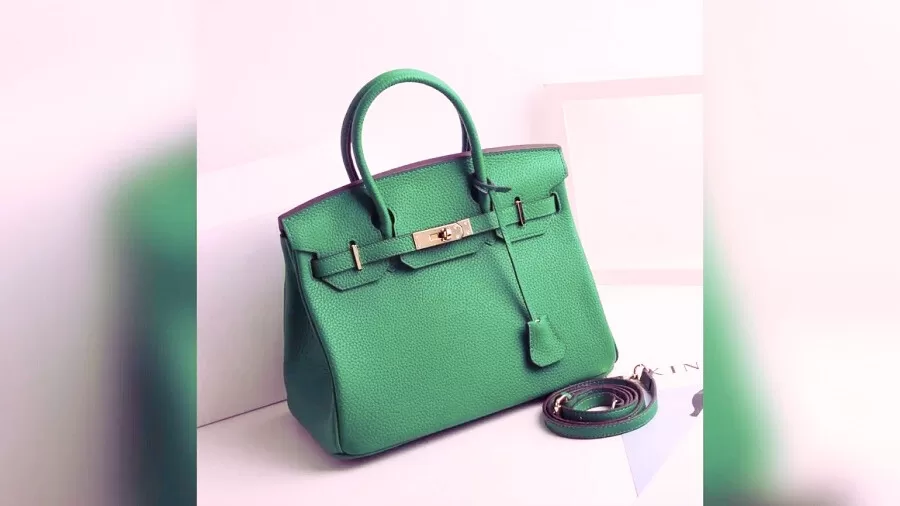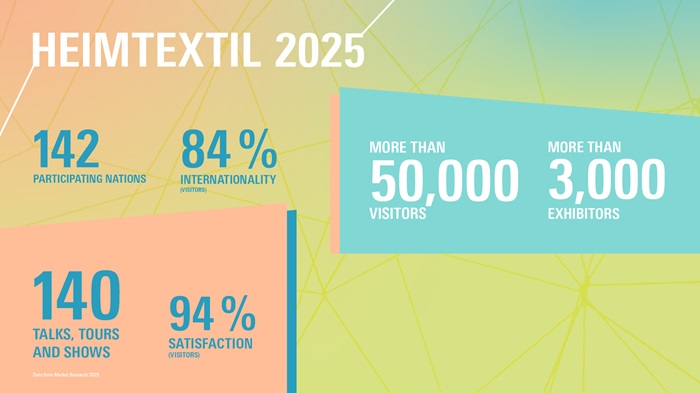FW
Cotton's share in the US clothing market had fallen following the sharp rise in cotton prices in 2012. Since November, polyester prices have started moving south while cotton prices have rising. Synthetic apparel imports rose by more than 20 per cent from 2011-13, while cotton-based imports fell 14 per cent.
After the sharp rise in cotton prices two years ago, many companies substituted high percentages of cheaper synthetic fibers in what had been 100 per cent cotton items. However, American consumers don’t like the decline of cotton content in their apparel purchases. Major concerns are shrinking, wrinkling, pilling, fading, stretching, snagging, itching, and odor. Synthetic clothing tends to have more major performance issues than apparel made with natural fibers like cotton. Some synthetic clothing has a higher likelihood to have odor and snagging issues.
Shoppers are willing to pay 20 to 30 per cent more to keep cotton in their clothing. The US still maintains over 60 per cent market share of cotton in fashion apparel, which is much higher than the world average in the mid 30 per cent range. For brands although reduction in cotton content may have provided short-term cost-savings, long-term challenges such as potential customer loss, decreased profits, and harm to a retailer or brand's image may occur.
Bayer has opened a state-of-the art textile coating plant in Shanghai that uses waterborne polyurethane technology instead of potentially polluting solvents. The company is looking to replace PU-based textile coatings and artificial leather with a more sustainable option. It has also installed new lab facilities at its headquarters in Germany and in the US to allow it to develop a new generation of more sustainable polyurethane (PU) coated textile materials.
The production of PU synthetic leather and textile coatings results in the emission of dimethyl formamide (DMF) vapor, which has been linked to both cancer in humans and birth defects. However, the new technology from Bayer uses water-borne polyurethane chemistry in a dry process that does not require any DMF.
Bayer expects global demand for environmentally friendly synthetic leather and coated textiles to grow strongly. The increase will be felt most prominently in China, home to 90 per cent of the world’s production of these materials. Many apparel and footwear brands as well as consumers have embarked upon a huge sustainability agenda to address the social and environmental impact of the industry. Governments and regulators in textile material producing countries such as China are also calling for improvements.
www.bayer.com/
The ITM (International Textile Machinery) exhibition will be held from September 1 to September 4, 2016 in Turkey. ITM Texpo Eurasia International Textile Machinery Exhibition is among the leading exhibitions in this sector. It has a place in the world’s textile exhibitions calendar with its feature of an international arena where cutting-edge technologies are exhibited. It’s a meeting place for hundreds of domestic and foreign textile leaders.
Texpo Eurasia is one of the most important textile events in Turkey and is a platform where professional visitors, buyer groups and investors from Eurasia and Africa meet and exchange information. The scope of Texpo Eurasia includes cotton and fiber processing machines, yarn twisting machines, weaving machines, bleaching machines, textile printing machines, knitting machines, linking machines, textile chemicals and machinery components. Texpo Eurasia is held simultaneously with Istanbul Yarn Fair and Hightex as one of the region’s most powerful sectoral fairs.
Turkey has a strong textile sector and VAT rates have been reduced, while tax rates on import of fabric and ready to wear garments have been increased and decisions on rationing for quotas on cotton yarn have been introduced. All these have served to raise the competitiveness of the Turkish textile sector and increase its production capacity.
www.texpoeurasia.com/en/
Pakistan wants to have greater market access in the US in line with its GSP plus facility from the EU. Pakistan feels a boost to the textile industry in Pakistan will be helpful in curbing extremism. Right now Pakistan's share of textile exports to the US is 2.8 per cent, which it wants to increase to 5 per cent.
The feeling within the textile industry in Pakistan is that it can benefit with the establishment of Reconstruction Opportunities Zones. They believe the engagement of Pakistan with war against terrorism has hindered the growth of the textile industry. Pakistan has spent around $10 billion in its war against terrorism between 2005 and 2012. International buyers are not visiting Pakistan due to the travel advisory but still the country’s textile industry is able to compete internationally due to high quality products.
The All Pakistan Textile Mills Association (APTMA) says there is no child labor issue in Pakistan's textile industry and most mills are fully compliant with ISO standards, which is one big reason for the recent extension of the GSP plus facility from the EU. Also Chinese investors are showing interest in investing $2 billion in Pakistan’s apparel park.
www.aptma.org.pk/
Vietnam is negotiating for the Trans-Pacific Partnership (TPP) agreement and the free trade agreement with EU, which are expected to be applied in the next couple of years. When these agreements are signed, Vietnamese garment and textile products will enjoy zero per cent tax in the US and EU. The average tax rates are 17.5 per cent and 9.6 per cent in these two markets respectively.
One of the US’ conditions for zero per cent tax rate is that fibers must be produced in Vietnam or other TPP countries. Most countries with TPP have not developed the fiber industry yet, forcing Vietnam to produce domestically. The EU also imposes conditions on fabric production. The US and EU markets spent $105 billion and $260 billion on garment and textile products last year. However, Vietnam exports accounted for only 8 per cent and 3 per cent of their market share respectively.
Nearly 60 per cent of 90 million Vietnamese are in the working age, which will be a good human resource supply to develop the garment and textile industry. Experts believe Vietnam will become the world center of garment and textile production. China used to be a leader with 50 per cent of the global supply. However, that has now reduced to 40 per cent due to various reasons like pollution, increasing production costs and shortage of human resources.
Bangladesh Prime Minister Sheikh Hasina has urged buyers to increase prices of garments, so that the government can pressurize employers to raise wages in the country’s readymade garment industry. Wages of garment workers have been raised in the last five years from Tk 1,600 to Tk 5,300 in two phases, and dormitories have also been constructed for them.
Bangladesh plans to set up garment villages to ensure good working conditions. Bangladesh is currently the second largest garment exporter in the world, next only to China. The garment sector accounts for nearly 80 per cent of the country’s foreign exchange earnings. Bangladesh has taken several steps post the Rana Plaza tragedy, including the appointment of inspectors to garment factories and amendment to the labour law. It has taken initiatives aimed at increasing the quality of life of garment workers.
The Bangladesh government feels if buyers increase prices of readymade garments, it would help the government to put pressure on owners of RMG companies to hike workers’ salaries. However, factory owners say if they ask buyers for a better price, buyers threaten to go elsewhere.
Indian textile exports to China, including cotton yarn, are facing a problem as since January, the rupee has been rising and the yuan falling, eroding India’s earlier cost advantage and giving China’s products a price advantage. Also China has cut direct import of Indian yarn in the past three months.
If the rupee keeps appreciating, and the yuan keeps depreciating, it will have a bad impact on Indian yarn exports. Given the substantial cost difference, cotton’s share of the market is expected to continue its decline this season. India had a cost advantage compared to China, where labor cost is higher. This is getting offset due to the yuan’s slide. And global buyers have started negotiating on prices. For instance, the 30s combed variety of yarn is priced at $3.6 a kg but buyers now want it at $3.5 a kg, the level to which China has cut its price.
The price of Shankar-6, the benchmark variety of cotton, has gone up 4.7 per cent since the start of the year to Rs 11,838 a quintal. Uncertainty on how China will handle its large reserves of cotton next season and the significant gap between polyester and cotton prices does not bode well for cotton consumption in China. To save cost, textile companies there could increase the use of polyester at a time when its domestic economy is on a slower track.
UK retailers are increasingly turning to sourcing apparels from Mauritius. They are getting jerseys, knits and denims manufactured in the far eastern country. While brands like Arcadia, Marks & Spencer, Primark and Asos already source their apparel needs from the country, now others like lifestyle brand Joules and home shopping group N Brown are considering sourcing from Mauritius.
Both these companies recently attended the Mauritian Fashion Fiesta, held in London on April 3-4 at the Emirates Stadium, where 25 textile manufacturers from the country exhibited. Joules plans to move its knitwear production to the country since it is closer to home. The company currently imports its products from China and India but feels that rising cost of living in China may finally lead them to Mauritius due to shorter lead time and lower minimums.
Following last year’s IMF report on growth predictions of advanced economies, it is predicted that the UK economy will grow ahead of Germany, Japan and France in the coming decade. Enterprise Mauritius, organizer of the Mauritian Fashion Fiesta therefore positioned itself to take advantage of the growing demand in this market. The platform provided an opportunity to connect the right UK and European buyers to participating Mauritian exhibitors during the fiesta.
Pakistan's federal minister for textile industry Abbas Khan Afridi told members of Faisalabad Chamber of Commerce and Industry that the government was actively considering imposing duty on yarn import from India. However, the final decision would be taken after consultation with all stakeholders and keeping national interest in mind.
He told members that since Pakistan’s economy is directly linked with the textile industry, the government will ensure every measure for its growth. He added that the government has decided to work towards the welfare and betterment of Pakistan totally ignoring ‘what was done or not done’ in the past. Gas supply to textile sector will be increased and more relief measures would be offered to textile the sector.
He also appealed to stakeholders to discuss problems faced by the industry and find solutions with viable and practical solutions. Regarding the ban on use of gas generators, he said the matter would be taken with the minister for petroleum, since most of the industrial units bank upon the generators to overcome the shortage of electricity.
MNA Mian Abdul Manan during the meeting said that the government was trying to resolve the economic issues on top priority basis and Prime Minister Nawaz Sharif had re-aligned its policies to achieve the desired goals within the shortest possible time.
The 14th China Yiwu International Exhibition showcasing hosiery, knitting, dyeing and finishing machinery and the 3rd China Yiwu International Exhibition on automatic garment machinery & sewing equipment were held recently in Zhejiang. The events provided a wide variety of thematic zones creating the ultimate trading and technology exchange platform for textile industry.
Spread over an area of 15,000 sq. mtr., YiwuTex featured over 200 knitting and automatic garment machinery exhibitors from 11 countries who showcased top notch machinery and latest textile products. It attracted 9,522 visitors and around 20 delegations from local and international destinations.
Associations visiting the fair included Jiangsu Textile Fashion Color Association, Shanghai Textile Trade Association, Haimen Clothing Chamber of Commerce, Putian Commerce Association, Hangzhou Textile Industry Association, Pujiang Leggings Industry Association, North-Eastern Socking Textile Industry Plantation, Eastern Silk Market China, China Textile Industry Association-Professional Committee of Underwear, Hanning Hosiery Industry Association, Wenzhou Chamber of Commerce-Ladies Wear Branch, Zhuji Hosiery Industry Association, Pujiang County Knitting, Printing and Dyeing Industry Association and Sewing Machine Development Club, Ludhiana, India, among many others.
Companies such as Mengna Hosiery, Langsha Group, Bonas Hosiery, Manzi Hosiery, Wanyu Knit, Bailong Knit, Sanding Weaving, Lima Knit, Ranni Dress and Leshi Garment too visited the exhibition to learn about latest developments in the industry.
YiwuTex also organized a series of professional, high-end and effective concurrent activities to explore future development and get advice on upgrading and transformation.
www.yiwutex.com











